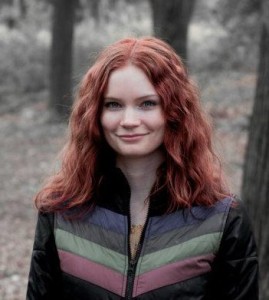The Radium Girls, by Kate Moore: Something I think about quite a bit is whether we have – as a world, as a society, as scientists – gotten better at determining when materials/elements/products are going to be toxic too us than we used to be, or if we just believe we are because we’ve discovered and ceased using lead, asbestos, radium, etc. It’s possible that we are actually better – that we aren’t simply relying on having ruled out some of the most poisonous things and that instead we have better testing methods and more foreknowledge of how substances react with our bodies…but I’m skeptical. I don’t have a substantially better way to navigate the world, though – I avoid microwaving plastic even when it says it’s microwave safe, because why are plastics suddenly okay to microwave when previous iterations weren’t, I don’t use real silver flatware (much to my mom’s annoyance when she wanted everyone’s silverware to match at Christmas…), and I have generally avoided going through the scattershot radiation x-ray machines at airports. And all of those precautions may be unnecessary or even misguided (I’m imagining that glass and ceramic are more time-tested in microwaves, but is that really true? Did all three materials exist when microwaves were invented?), but they aren’t time-consuming nor do they come with any ill effects (I suppose what I’m saying here is that I not only got the COVID vaccine as soon as I was eligible but also had my immunity titers for things like MMR and DTAP tested years ago and got boosted for those, too).
The book, though, is less about a lack of understanding of the substances we interact with – it starts off that way, but it’s quickly apparent to numerous scientists that radium is dangerous – and more about lack of workplace safety and the ways in which young women were sacrificed and ignored in favor of production and profit. The “body horror” as I’ve heard it called is gripping and terrifying, and it starts not even fifty pages into the book. I wished I had a better way to keep track of the characters; I understand the author’s desire and commitment to naming as many of the radium girls as possible, but it was difficult to recall their individual characteristics when they reappeared. This became easier eventually, as five of them become the focus when they bring a lawsuit against their employers, who by that point are completely mercenary, misogynist, and immoral in their response. It’s an infuriating but captivating read.
Admissions, by Kendra James: I love the double-play of the title – admissions to boarding school and colleges, yes, but also confessions about boarding school and examinations of what it’s like to be one of a few Black students there. It’s not as if non-boarding private schools and public schools are devoid of the same issues, but they’re amplified by the closed-in environment and the ways in which the students (at this school at this time, in particular) were left to fend for themselves against casual racism and isolation.
Picnic at Hanging Rock, by Joan Lindsay: I think there’s a derided American tendency to romanticize the UK (attended by a significant amount of baggage about which parts of UK – or primarily British – society and history Americans tend to romanticize, eg wealthy and white), but I’m much more susceptible to mooning over Australia. The descriptions of flowers and trees and nature alone make this novel worth reading, and the contrast of an all-girls boarding school in a rambling (it’s not just me) Victorian mansion set in the Australian bush is tantalizing. But…the setup and atmosphere and building action did more for me than the conclusion.
The Impossible Climb, by Mark Synnott: More mountains more problems. Uh…the way the author describes women (one passage in particular) is incredibly off-putting, as is the weird voyeurism about Alex Honnold’s personal life and bodily habits (Honnold does not come off well and it’s hard to tell how much of that is a product of the way the author writes him). I didn’t mind the way various threads (the author’s own climbing experiences, the history of climbing, and Honnold’s free solo of El Capitan) were woven together (if I hadn’t seen Free Solo and read enough about Honnold already I might have minded more) but…yeah, bad taste.
Fiona and Jane, by Jean Chen Ho: This was…good. There’s not really a diplomatic way of saying that without it sounding like “what I actually mean is it was not amazing” but I don’t really mean it that way – just that it was sort of quiet and pleasant. I think it being linked stories rather than a novel contributed, but ultimately it was more that no singular event was given huge weight, even though both title characters there were numerous significant events. I don’t automatically respond to books that feature significant events, anyway – some of my favorite books are those in which nothing really happens – but this felt like a drawing in which everything was the same shade of pale. I would definitely read something else by this author, but the book was nice but unmemorable for me.



